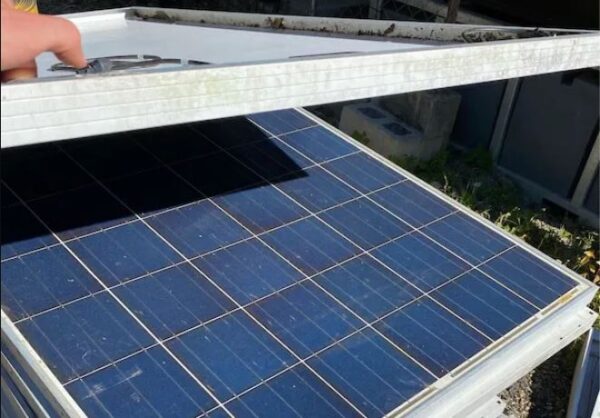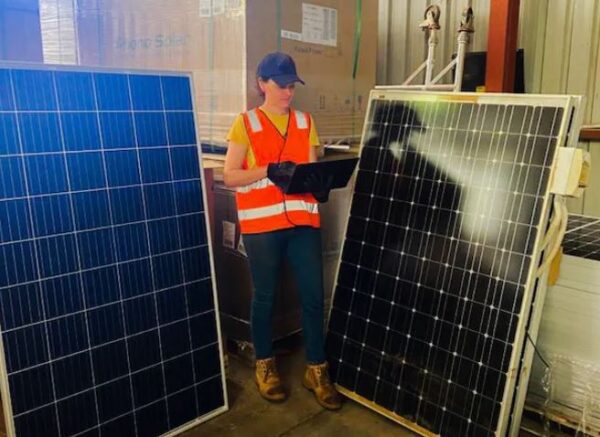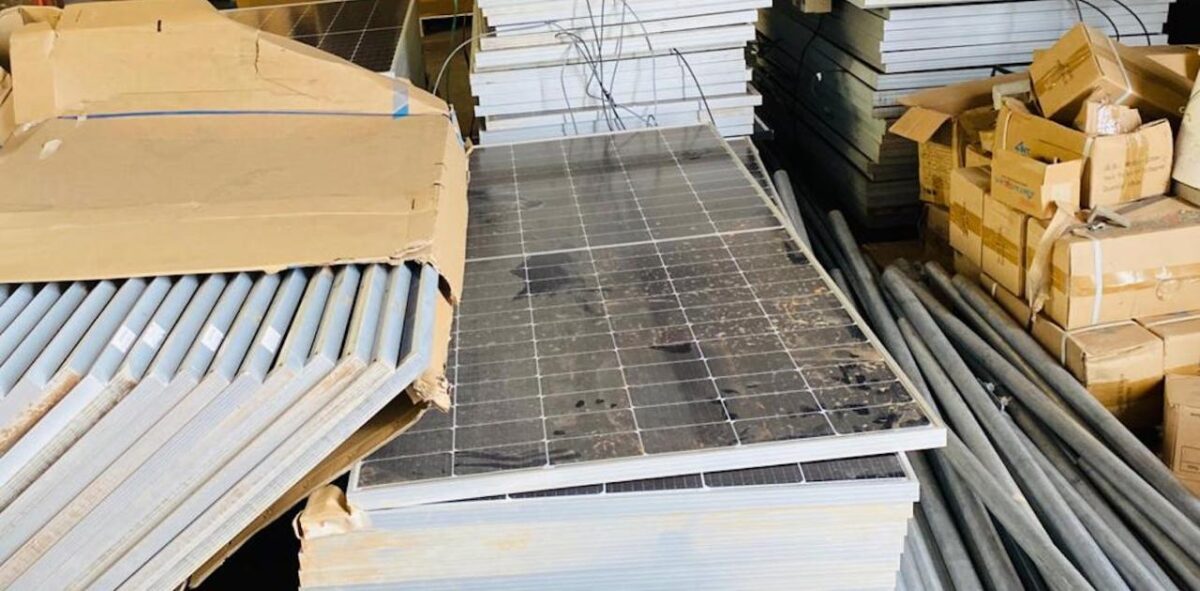Managing all those discarded PV panels will be a huge job. Rather than treating them as “waste”, though, these panels could be a source of social, environmental and economic value. Our new industry report outlines how we can realise that value.
PV panels contain a variety of valuable materials. The panels can also be put to new uses, such as on uninhabited community and sports club buildings, for agricultural irrigation pumps, or for camping and caravanning.
However, at present, they tend to follow a linear, “take, make, dispose” lifecycle. This results in many PV panels being sent to landfill or stockpiled. Much of their value is wasted.

Image: CPVA
What did the research look at?
The University of Queensland and Circular PV Alliance have assessed the market for used and surplus PV panels, with funding from Energy Consumers Australia. Our goal was to understand potential customers and value streams for used PV panels. We also wished to identify market or policy barriers to reusing, repurposing and recycling these panels.
We reviewed the academic research on the topic and conducted a series of interviews. Thirteen organisations with diverse interests in solar energy and PV panel reuse and recycling participated. A series of recurrent themes emerged that indicate potential or perceived opportunities and challenges for PV panel reuse.
What did the research find?
Overall, there was broad concern among interviewees that PV panels are being decommissioned before the end of their productive lives. A few key reasons stood out:
- renewable energy certificates encourage PV investors to install new panels rather than extend the life of older panels, because the subsidy is paid in full on installation, rather than as power is generated
- low-quality PV products have a high failure rate
- an array that combines different PV panels can be limited by the lowest-performing panel.
These issues contribute to the already large amounts of discarded panels coming from solar farms, and warranty and insurance claims.
However, we also found reclaimed PV panels offer low-cost, clean energy options for households and community energy projects.

Image: CPVA
Even when not reusable, PV panels include valuable materials that can be recovered. The average silicon panel contains silver (47% of recycled materials value), aluminium (frame, 26%), silicon (cells, 11%), glass (8%) and copper (8%).
And PV panel recycling is becoming more efficient. This has led to better-quality outputs and higher recovery rates. For example, nano-silicon created by processing recovered silicon can sell for over $44,000 per kilogram.
A shift towards viewing a PV panel as a valuable resource or asset, rather than “waste”, will improve both consumer and industry understanding of its inherent value, even when it’s not brand new.
How do we turn ‘waste’ into an asset?
We can keep used PV panels out of landfill by treating them as an asset through a value-capture system. This will create a variety of benefits and opportunities.
The circular economy model loops the “take, make, reuse” phases into a self-sustaining cycle. It provides a foundation to grow markets for used PV panels. This will tap into consumer demands for credible and sustainable products and services.
There are already successful examples of similar solutions for other products in Australia and around the world. Australian examples include the National Television and Computer Recycling Scheme and Tyre Stewardship Australia, as well as state-based beverage container deposit schemes.
So how do we set up a circular economy for PV panels? We found a combination of policies, regulations and commercial services can overcome the obstacles to reuse and recycling.
A consistent, national approach is needed to establish successful markets for used PV panels. Standards for testing and certifying these panels, as well as repair warranties, are essential to build consumer trust in this product.
Industry reporting and accreditation requirements as well as product traceability, so the reused and recycled panels can be accounted for, are all important elements of product stewardship and used PV panel markets.
Targeted engagement with a broader range of potential consumers, insurers and PV panel manufacturers will help overcome their perceived barriers to reusing panels.
Taken together, these actions are the building blocks of creating a circular economy for PV panels in Australia. The looming volumes of used panels and ever-increasing amount of solar energy being installed in Australia compel us to do this. Consumers, industry and the environment will all benefit.
Author: , Senior Lecturer, School of IT and Electrical Engineering, The University of Queensland
This article first appeared in The Conversation and is republished here with permission.
The views and opinions expressed in this article are the author’s own, and do not necessarily reflect those held by pv magazine.
This content is protected by copyright and may not be reused. If you want to cooperate with us and would like to reuse some of our content, please contact: editors@pv-magazine.com.








By submitting this form you agree to pv magazine using your data for the purposes of publishing your comment.
Your personal data will only be disclosed or otherwise transmitted to third parties for the purposes of spam filtering or if this is necessary for technical maintenance of the website. Any other transfer to third parties will not take place unless this is justified on the basis of applicable data protection regulations or if pv magazine is legally obliged to do so.
You may revoke this consent at any time with effect for the future, in which case your personal data will be deleted immediately. Otherwise, your data will be deleted if pv magazine has processed your request or the purpose of data storage is fulfilled.
Further information on data privacy can be found in our Data Protection Policy.